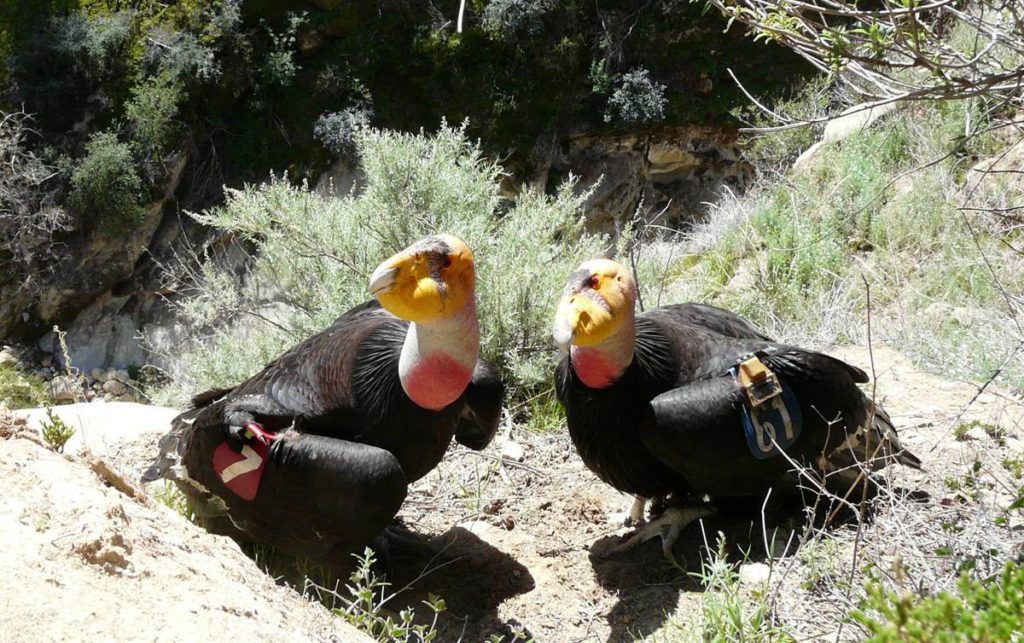
Zion National Park Condor pair may be incubating an egg
A Zion National Park condor pair appear to be nesting again inside the park. Park staff first observed the California condor pair entering a cavity on February 26. Since then, the pair has been regularly observed in the cavity and the surrounding area. Biologists from The Peregrine Fund, a nonprofit organization that releases and monitors condors, has confirmed that GPS locations and daily behavior of both parents indicate regular incubation.
Condor courtship and nest site selection usually occur during the winter months, culminating with the production of a single egg between late January and early April. Both condor parents incubate the egg with exchanges occurring every three to four days on average. If all goes well, a chick will hatch after approximately 56 days of incubation, and both parents will feed and care for the young condor. The chick will remain in the nest for up to seven months before fledging. Even after the chick fledges, it will depend on its parents until the following year.
The Zion National Park condor pair has attempted to nest each of the last two years in remote areas of Zion. The pair produced a chick in 2014, but it failed to successfully fledge. Last year, GPS locations indicated the pair was nesting again, but this was never confirmed due to the remote location of the nest site. It is not unusual for a pair to fail in the first few attempts.
The southwest experimental population of condors
The southwest experimental population of condors was initiated in 1996 with releases occurring on an annual basis in Vermilion Cliffs National Monument. Condors have successfully nested in northern Arizona with the first wild-hatched young fledging from a nest in the Grand Canyon in 2003. Over 20 young have been produced since, and wild-hatched condors have produced young — a major milestone on the way to recovery.
Lead poisoning is currently the greatest obstacle for this endangered bird, with 53 percent of diagnosed deaths attributed to lead poisoning. Condors are scavengers that feed primarily on the carcasses of mammals. They unintentionally consume lead when feeding on carcasses of animals shot with lead ammunition or lead-contaminated gut piles left in the field. Both Utah and Arizona currently have voluntary non-lead ammunition programs within the condor’s range to reduce the amount of lead in the environment.
Zion National Park will soon launch a nest watch program at the Zion Human History Museum wherein park rangers and volunteers will use spotting scopes to monitor the nest cavity. Visitors are welcome to join them and learn more about California condors. Those interested should inquire at the visitor center for specific dates and times.